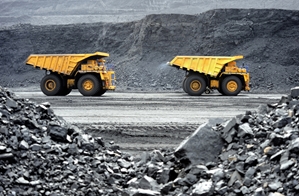As the technology and demands transform, the workforce is often expected to evolve accordingly. This can include acquiring new skills, growing and contracting to suit activity levels and transferring between related departments to meet labour needs.
It is a widely accepted fact that Australia’s mining industry is currently in a state of change, as construction and approvals give way to operations and production. Staying ahead of this transformation is an integral career move for any individual currently working in an apprenticeship in Queensland’s mining sector.
According to a recent article published by industry body Mining Australia, one of the most substantial changes due to impact on local mining is the increasing number of underground mines.
While open pit mining has long been considered the most economical and cost-effective form of mining in Australia, resources close to the surface are becoming scarce.
Industry leader Rio Tinto forecasts that underground mining is due to represent a much larger proportion of the overall industry over the coming years as deeper deposits are discovered and shallow seams are exhausted.
According to a Rio Tinto seminar in 2010, underground operations accounted for 26 per cent of all copper production in 2019. This figure is expected to increase to 40 per cent of global copper mining by 2025.
Underground contract mining specialist Pybar’s group business development manager David Noort explained to Australian Mining that open cut mines have traditionally been considered the most viable mining options due to “relatively near surface expressions”.
However, many surface mines around the globe are approaching the “end of their economic life” as most of the high-grade expressions have already been discovered and miners are “left chasing ore down”.
“We’re seeing fewer new near-surface discoveries, and mines are chasing their existing deposits into deeper and deeper depths, so miners will continue to follow it down,” Sandvik Mining and Construction’s underground mining specialist Malcolm Campbell agreed.
This forecasted shift towards underground mining is expected to impact on the specific skills and talent companies in this industry will seek into the future. For example, individuals who have received official training in working in confined spaces may now get preference over other workers.
Understanding how the industry is transforming can help individuals anticipate the needs of their potential employers, giving apprentices and job seekers an edge in the open job market.
By Leanne de Toerkenczy, Public Relations Coordinator
